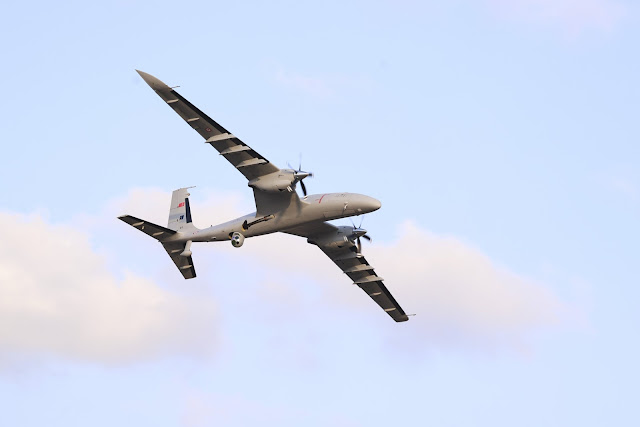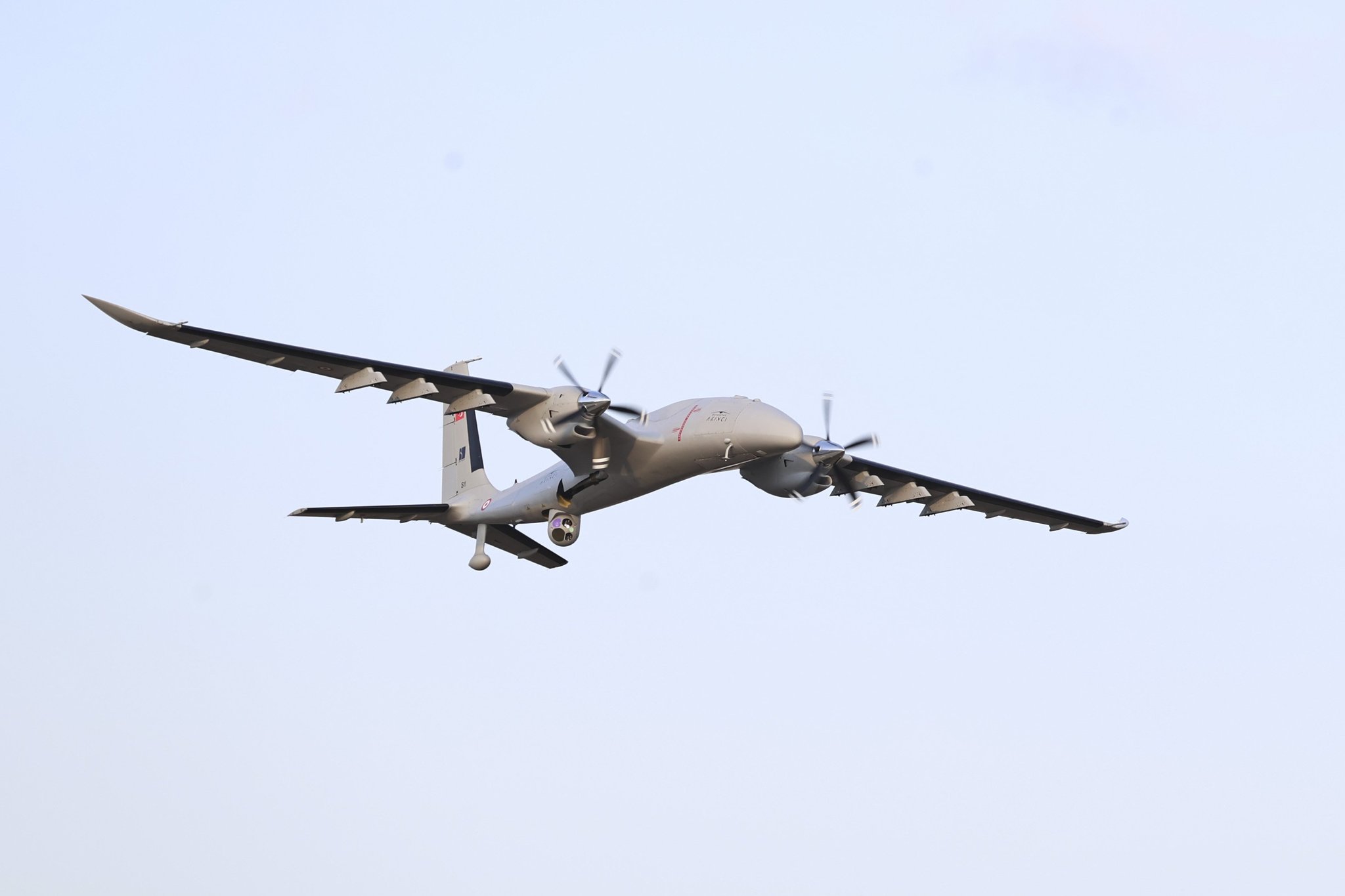El futuro está en los cielos. Porque las naciones que no pueden proteger sus cielos, nunca pueden estar seguras de su futuro. (Por Mustafa Kemal Atatürk). El vehículo aéreo de combate no tripulado (UCAV) Bayraktar Akıncı introduce una serie de capacidades novedosas en el campo de la guerra aérea no tripulada. Estos incluyen varias características que no se habían visto en ningún otro tipo de UAV en el mundo antes, más notablemente la capacidad de lanzar misiles de crucero de alta precisión de más de 250 km de alcance y misiles aire-aire de alcance visual más allá (BVRAAM) en objetivos. hasta 100 kilómetros de distancia. En la práctica, estas capacidades convierten al Akıncı en el primer avión de combate no tripulado multifunción de producción del mundo. Aunque ya es una plataforma inusualmente diversa, la enorme capacidad de carga útil de Akıncı de 1.500 kg, la variedad de sus cargas de armas y su resistencia de más de 24 horas significan que también es adecuada para hacerse cargo de muchas de las misiones de ataque terrestre.
İstikbal göklerdedir. Göklerini koruyamayan uluslar, yarınlarından asla emin olamazlar – The future is in the skies. Because nations that cannot protect their skies, can never be sure of their future. (By Mustafa Kemal Atatürk)
The Bayraktar Akıncı unmanned combat aerial vehicle (UCAV) introduces a number of novel capabilities to the field of unmanned aerial warfare. These include several features not seen on any other type of UAV in the world before, most notably the ability to launch 250+km-ranged high-precision cruise missiles and beyond-visual-range air-to-air missiles (BVRAAMs) at targets as far as 100 kilometres away. These capabilities in practice turn the Akıncı into the first production multi-role unmanned combat aircraft in the world.
In a ceremony attended by Turkish President Erdoğan on the 29th of August 2021, the first four Bayraktar Akıncı UCAVs were officially handed over to the Turkish Armed Forces by Baykar Savunma. Of the first four production Akıncıs, two are destined for the Land Forces Command, 2nd Army UAV Battalion Command while the other two will enter service the 341st Shadow (Gölge) Squadron of the Air Force Command.

Although already an unusually diverse platform, the Akıncı’s huge payload capacity of 1.500kg, the variety of its weapon loadouts and its 24+-hour endurance mean that it is also well suited to take over many of the ground attack missions currently assigned to Turkey’s 240-strong F-16 fleet. Replacing the F-16 in at least some of these roles frees up precious airframes which can then be used for air-to-air combat roles, at least partiallly decreasing the gap left now that Turkey has been excluded from the F-35 project.
Apart from debuting a unique set of abilities, the Akıncı also significantly expands on Turkey’s existing unmanned warfare capabilities through a massive increase in payload capacity compared to systems such as the Bayraktar TB2 and TAI Anka. In addition to enabling the carriage of guided bombs that were too heavy to be carried by these UAVs, the Akıncı’s increased payload capacity also allows for a far greater number of smaller munitions such as the MAM-L to be carried. Indeed, up to 24 MAM-Ls can be brought to bear by the Akıncı compared to just four on the TB2.
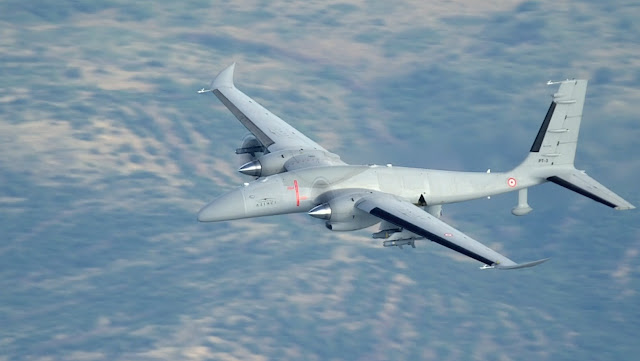
As Baykar continues weapons systems integration on the Akıncı, several types of guided munitions are currently being tested to verify their use from the new platform. This already included the MAM-T with a range of just under 40km (compared to upwards of 14km on the MAM-L). The MAM-T will serve alongside the Teber, LGK, KGK and (L)HGK family of precision-guided munitions also destined for use on the Akıncı. These munitions consist of indigenously designed guidance kits mated to locally produced Mark-82, Mark-83 and Mark-84 iron bombs.
Especially the 900kg weighing Mark-84 is a daunting piece of armament, and also the heaviest bomb ever to be integrated on a drone. When fitted with a GPS/INS guidance kit, the bomb is known as the HGK-84. The HGK-84 can attain ranges of up to 28km (or 22km when launched from lower altitude), while a different variant known as the LHGK-84 is fitted with a laser-guidance kit for increased accuracy. Yet another variant, the NEB-84, is a (guided) penetrator bomb designed for use against hardened surface and underground targets such as bridges and bunkers.
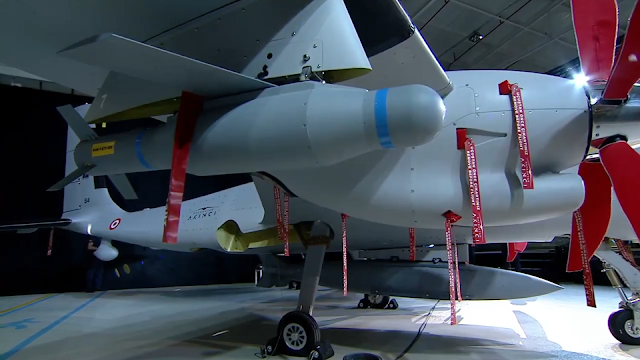
To accommodate the seemingly endless variety of munitions, the Akıncı features up to eight underwing hardpoints and another one under its fuselage for a total of nine hardpoints. The latter is set to carry the heaviest ordnance cleared for carriage on the Akıncı, comprising the HGK-84 and the SOM-series of cruise missiles. A typical loadout could consist of two KGK-82 glide bombs with wing kits on the inboard pylons, two Teber-82 precision-guided bombs and eight MAM-Ls, as shown in the rendering below. This allows the Akıncı to set out to engage some high-value hardened target at long range, come across a convoy of enemy vehicles along the way and promptly destroy it, and then continue on to complete its mission.
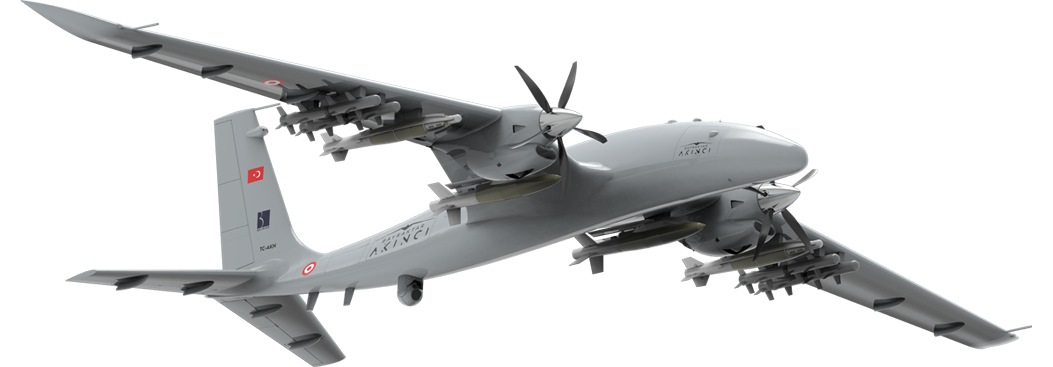
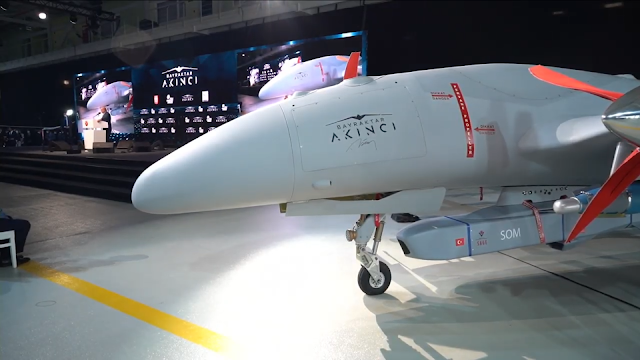
Once in active service, the Bayraktar Akıncı will herald a new chapter in unmanned warfare – whether by firing cruise missiles at enemy targets from well within friendly airspace, destroying underground bunkers with NEB-84 penetrator bombs, bringing armoured columns to a grinding halt with up to 24 MAM-L munitions, targeting enemy air defence systems well outside of their range or by shooting down enemy aircraft, UAVs and helicopters. The variety in weapon loadouts means the Akıncı can easily be repurposed to carry out other tasks during the same (day-long) mission, allowing greater flexibility in operations than any drone of the past.
For countries interested in buying the Akıncı the fact that all the munitions (and their guidance kits) used for these tasks can be sourced directly from Turkey will surely be appreciated as well. Furthermore, the fact that the new UCAV adheres to the NATO standards for munitions means that NATO countries can integrate other or local manufactured munitions on the Akıncı. This does not extend to NATO countries only, and countries that are currently developing their own precision-guided munitions can expect relatively simple integration with the Akıncı. Its attractiveness to foreign customers might be precisely what ensures the Akıncı’s success, escaping the fate of a number of promising UCAV designs the world over that were ultimately only produced in scarce numbers. As such, it may well soon secure its role as one of the most significant upheavals in the annals of unmanned warfare.
